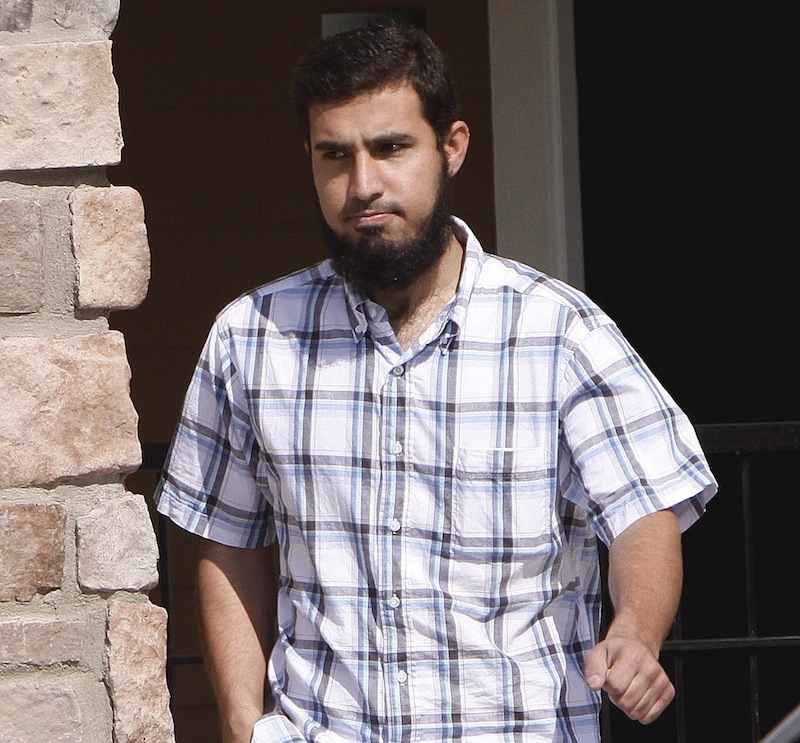WASHINGTON (AP) — The Obama administration declassified a handful of details Tuesday that credited its PRISM Internet spying program with intercepting a key email that unraveled a 2009 terrorist plot in New York.
The details, declassified by the director of national intelligence, were circulated on Capitol Hill as part of government efforts to tamp down criticism of two recently revealed National Security Agency surveillance programs.
Najibullah Zazi’s foiled plot to bomb the New York subways has become the centerpiece of that effort. It remains the most serious al-Qaida plot inside the United States since the 9/11 terror attacks.
In the rush to defend the surveillance programs, however, government officials have changed their stories and misstated key facts of the Zazi plot. And they’ve left out one important detail: The email that disrupted the plan could easily have been intercepted without PRISM.
The debate over the surveillance echoes one from years earlier, over President George W. Bush’s warrantless wiretapping and harsh interrogation tactics. Critics said the government had gone too far but the administration said the techniques were lawful and kept America safe.
“What is clear from this information released by the DNI is that each of these programs is authorized by law, overseen by Congress and the courts and subject to ongoing and rigorous oversight,” said Sen. Mitch McConnell, R-Ky.
Zazi, an Afghan-American cab driver living in the Denver suburbs, was an al-Qaida-trained bomber. In September 2009, he sent a coded message to a Yahoo email address in Pakistan. Months earlier, British officials had linked the Yahoo address to a known al-Qaida operative.
“The marriage is ready,” the email said in part.
The NSA intercepted that email, touching off a frenzied two-week investigation in New York and Colorado that led to Zazi’s arrest. He pleaded guilty and provided information that helped send two friends to prison.
That much has been known for years. The government has put Zazi back in the news now because the Washington Post and Guardian newspapers revealed the existence of two classified surveillance programs last week.
In one program, the government sweeps up the phone records of millions of Americans every day and stores them in a digital library. That program was authorized by the USA Patriot Act, passed shortly after 9/11.
The second, called PRISM, taps into major U.S. technology companies and monitors emails in the search for foreign terrorists. That program was authorized by 2007 and 2008 laws that allow the government to monitor, without specific warrants, emails believed to belong to foreigners.
When news of the phone-records program broke, officials quickly credited it with thwarting an attack.
“Within the last few years, this program was used to stop a terrorist attack in the United States,” said Rep. Mike Rogers, the Republican chairman of the House Intelligence Committee.
A senior intelligence official confirmed soon afterward that Rogers was talking about Zazi, but offered no explanation.
On Sunday, Sen. Dianne Feinstein, the Democratic chairwoman of the Senate Intelligence Committee, also credited the phone program with thwarting the Zazi plot.
Now, in talking points declassified by the administration, the government says that Internet eavesdropping, not archiving phone records, disrupted Zazi’s plans.
The use of PRISM to catch Zazi does little to resolve one of the key questions in the surveillance debate: whether the government needs to take such vast amounts of data, sometimes sweeping up information on American citizens, to keep the country safe.
That’s because, even before the surveillance laws of 2007 and 2008, the FBI had the authority to — and did, regularly — monitor email accounts linked to terrorists. The only difference was, before the laws changed, the government needed a warrant.
To get a warrant, the law requires that the government show that the target is a suspected member of a terrorist group or foreign government, something that had been well established at that point in the Zazi case.
In using Zazi to defend the surveillance program, government officials have further confused things by misstating key details about the plot.
Director of National Intelligence James Clapper said investigators “found backpacks with bombs.” Really, the bombs hadn’t been completed and the backpacks the FBI found were unrelated to the plot.
Feinstein said the FBI had Zazi under surveillance for six months. Court testimony showed Zazi was watched only for about two weeks before he was arrested.
___
Associated Press writer Donna Cassata contributed to this report.
___
Follow Apuzzo and Goldman at –http://twitter.com/mattapuzzo and –http://twitter.com/adamgoldmanap
Copyright 2013 The Associated Press.






